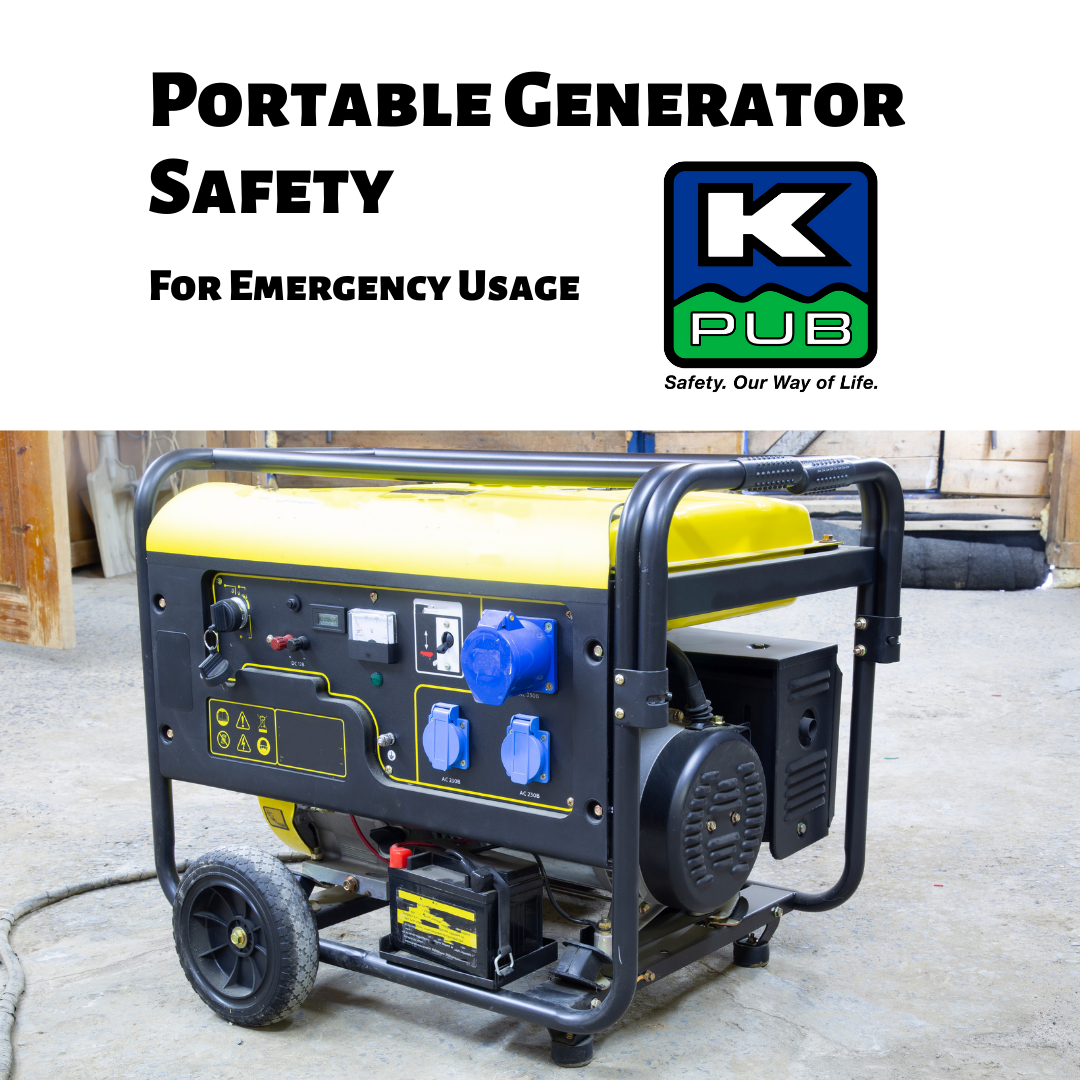
Keeping a portable generator on hand in case of a lengthy power outage is a great way to maintain access to electricity, but generators can also be extremely dangerous if not installed or used properly.
Before reading these tips, always read the owner’s manual and instructions for your generator. Carefully follow all instructions and warnings in order to safely start and operate the generator. Do NOT cut corners when it comes to safety.
Keep yourself and your loved ones safe while using a portable generator otherwise with these important safety tips:
1. Only use generators outside and at a minimum of 20 feet away from any structure or windows. Using a generator indoors can lead to dangerous and commonly fatal carbon monoxide levels. Operating a generator at a safe distance from any structure such as your home or garage, business, or your neighbors can ensure that exhaust does not enter.
2. Keep your generator dry. When using a generator, make sure it is on a dry surface under an open structure that’s a well-ventilated area, such as a carport. You should also make sure your hands are completely dry before touching your generator. Do not use a generator in wet, rainy weather.
3. Disconnect the power coming into your home or business. Before connecting a generator, disconnect your regular source of power. Power from your generator could be redirected back to KPUB utility lines creating a dangerous situation for KPUB linemen.
4. Properly ground your generator. Grounding a generator helps to prevent shock and electrocution.
5. Plug equipment directly into the outlets on your generator. Heavy-duty, outdoor extension cords that have a wire gauge that can handle the high load of electricity should be used.
6. DO NOT plug your generator into a wall outlet. You should never try to power your house or business by plugging a generator into a wall outlet or electrical panel. Doing so can send power back to the power lines which results in “back feed” of thousands of volts, which can cause injury or death to neighbors or utility crewmen working on the lines far from your home, and damaging equipment in your or neighbors’ homes. A licensed electrician needs to be called to connect a generator to a main electrical panel to ensure it is in accordance with local electric codes. Have the electrician install an automatic transfer switch so you can easily and safely disconnect your home or business’ wiring from the KPUB utility system before operating your generator.
7. Have an appropriate supply of fuel on hand. Assess how much fuel you can store safely and for how long. Gas and diesel may need chemicals added to them after being stored for long periods of time to ensure they are still safe to use. All fuels should be stored in fuel containers in a cool, dry, well-ventilated area.
8. Turn off your generator and let it cool down before refueling (never refuel while it is in use)
9. Inspect regularly and perform maintenance on your generator when needed. Check your generator’s tanks, pipes, and valves for damages or wear and replace materials as necessary. Schedule at least one maintenance service every year to ensure your generator is running correctly. Use fresh fuel in your generator and run it every-so-often to ensure it will be set when you need it.
In any emergency situation, it is crucial to make sure you are using your portable generator appropriately and responsibly to make certain you and your family are safe.
